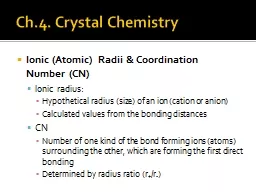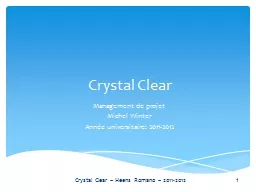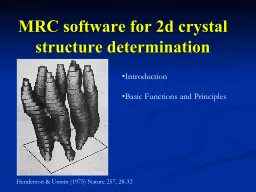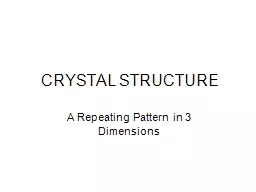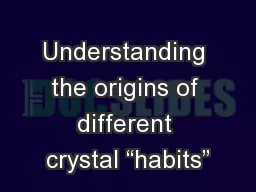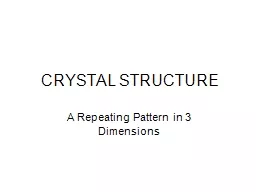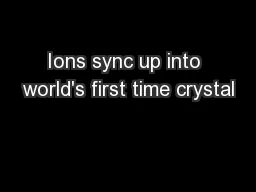PPT-Ch.4. Crystal Chemistry
Author : tatiana-dople | Published Date : 2016-02-22
Ionic Atomic Radii amp Coordination Number CN Ionic radius Hypothetical radius size of an ion cation or anion Calculated values from the bonding distances CN
Presentation Embed Code
Download Presentation
Download Presentation The PPT/PDF document "Ch.4. Crystal Chemistry" is the property of its rightful owner. Permission is granted to download and print the materials on this website for personal, non-commercial use only, and to display it on your personal computer provided you do not modify the materials and that you retain all copyright notices contained in the materials. By downloading content from our website, you accept the terms of this agreement.
Ch.4. Crystal Chemistry: Transcript
Download Rules Of Document
"Ch.4. Crystal Chemistry"The content belongs to its owner. You may download and print it for personal use, without modification, and keep all copyright notices. By downloading, you agree to these terms.
Related Documents

